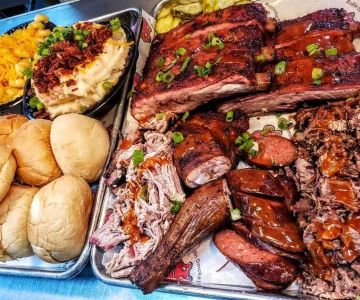- 1 - Understanding-The-Rise-Of-Dietary-Restrictions-In-Dining
- 2 - Strategies-Restaurants-Use-To-Adapt-To-Dietary-Needs
- 4 - Technology-And-Training-For-Dietary-Accommodation
- 5 - Real-Life-Examples-Of-Restaurants-Adapting-Successfully
- 6 - Tips-For-Finding-Restaurants-Friendly-To-Dietary-Restrictions
- 7 - Enhance-Your-Dining-Experience-With-Senix-Table
1. Understanding the Rise of Dietary Restrictions in Dining
Over recent years, the awareness and prevalence of dietary restrictions—ranging from allergies to lifestyle choices like veganism—have significantly increased. Diners now seek not only delicious meals but also safe and inclusive options that cater to their unique needs. Understanding how restaurants are adapting to dietary restrictions is crucial for consumers who want enjoyable and worry-free dining experiences.
2. Strategies Restaurants Use to Adapt to Dietary Needs
2.1 Diversified Menu Options
Restaurants expand their menus to include gluten-free, dairy-free, nut-free, vegan, and low-carb dishes. Offering variety ensures that guests with specific dietary restrictions can find suitable meals without feeling limited.
2.2 Ingredient Substitution and Sourcing
Chefs are experimenting with alternative ingredients like almond milk, coconut oil, or cauliflower rice to maintain flavor and texture while respecting dietary limitations.
3. Menu Customization and Ingredient Transparency
Modern diners value transparency, prompting restaurants to clearly list allergens and ingredients. Some establishments provide digital menus allowing customers to filter options based on their restrictions, empowering informed choices.
Customization has also become key, with many restaurants willing to modify dishes upon request to accommodate specific needs.
4. Technology and Training for Dietary Accommodation
4.1 Staff Education
Training staff to understand dietary restrictions and cross-contamination risks improves service quality and safety for sensitive diners.
4.2 Ordering and Preparation Technology
Advanced kitchen management systems track allergens and streamline communication between servers and chefs, reducing errors.
5. Real-Life Examples of Restaurants Adapting Successfully
Many popular chains have rolled out dedicated allergen-friendly menus. For example, a well-known pizza restaurant introduced gluten-free crusts and dairy-free cheese options, attracting a broader customer base.
Local eateries have gained loyal followings by offering customizable bowls where diners pick ingredients tailored to their dietary preferences, enhancing both safety and satisfaction.
6. Tips for Finding Restaurants Friendly to Dietary Restrictions
Researching online reviews, joining dietary-specific forums, and using apps that filter restaurants by allergen and diet accommodations can guide diners to suitable options.
Don’t hesitate to call ahead to ask about menu options and kitchen protocols to ensure a comfortable dining experience.
7. Enhance Your Dining Experience with Senix Table
To complement your dietary dining adventures, Senix Table offers beautifully designed tableware and serving accessories that elevate your meal presentation at home or events. Paired with thoughtfully prepared meals, Senix Table helps create memorable, inclusive dining moments.







 green seed vegan4.0 (1586 reviews)
green seed vegan4.0 (1586 reviews) Yummy's Hot Chicken4.0 (485 reviews)
Yummy's Hot Chicken4.0 (485 reviews) The Grove4.0 (1235 reviews)
The Grove4.0 (1235 reviews) El Palomo (Food Truck)4.0 (32 reviews)
El Palomo (Food Truck)4.0 (32 reviews) Nidda Thai Cuisine4.0 (914 reviews)
Nidda Thai Cuisine4.0 (914 reviews) Chicken Etcetera4.0 (13 reviews)
Chicken Etcetera4.0 (13 reviews) Best Places for Seafood Boils and Clambakes Across the U.S.
Best Places for Seafood Boils and Clambakes Across the U.S. Discover Delicious Vegan Desserts at Local Bakeries Near You
Discover Delicious Vegan Desserts at Local Bakeries Near You Best Late-Night Eats in Major U.S. Cities: Where to Satisfy Your Midnight Cravings
Best Late-Night Eats in Major U.S. Cities: Where to Satisfy Your Midnight Cravings The Ultimate Guide to New Year’s Eve Dining in Major Cities
The Ultimate Guide to New Year’s Eve Dining in Major Cities The Future of Sustainable Restaurants in America: Trends and Innovations
The Future of Sustainable Restaurants in America: Trends and Innovations Best Smoothie and Juice Bars for a Quick Healthy Bite
Best Smoothie and Juice Bars for a Quick Healthy Bite